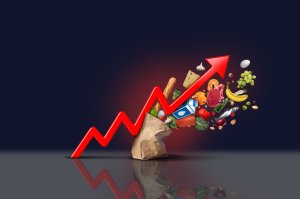A critical reappraisal of the case in favor of monetary tightening pressed by inflation hawks is overdue.
This paper critically evaluates debates over the causes of U.S. inflation. We first show that claims that the Biden stimulus was the major cause of inflation are mistaken: the key data series – stimulus spending and inflation – move dramatically out of phase. While the first ebbs quickly, the second persistently surges.
We then look at alternative explanations of the price rises. We assess four supply side factors: imports, energy prices, rises in corporate profit margins, and COVID. We argue that discussions of COVID’s impact have thus far only tangentially acknowledged the pandemic’s far-reaching effects on labor markets.
We conclude that while all four factors played roles in bringing on and sustaining inflation, they cannot explain all of it. There really is an aggregate demand problem. But the surprise surge in demand did not arise from government spending. It came from the unprecedented gains in household wealth, particularly for the richest 10% of households, which we show powered the recovery of aggregate US consumption expenditure especially from July 2021.
The final cause of the inflationary surge in the U.S., therefore, was in large measure the unequal (wealth) effects of ultra-loose monetary policy during 2020-2021. This conclusion is important because inflationary pressures are unlikely to subside soon. Going forward, COVID, war, climate change, and the drift to a belligerently multipolar world system are all likely to strain global supply chains.
Our conclusion outlines how policy has to change to deal with the reality of steady, but irregular supply shocks. This type of inflation responds only at enormous cost to monetary policies, because it arises mostly from supply-side difficulties that require targeted solutions. But when supply plummets or becomes more variable, fiscal policy also has to adapt: existing explorations of ways to steady demand over the business cycle have to embrace much bolder macroeconomic measures to control over-spending when supply is temporarily constrained.




